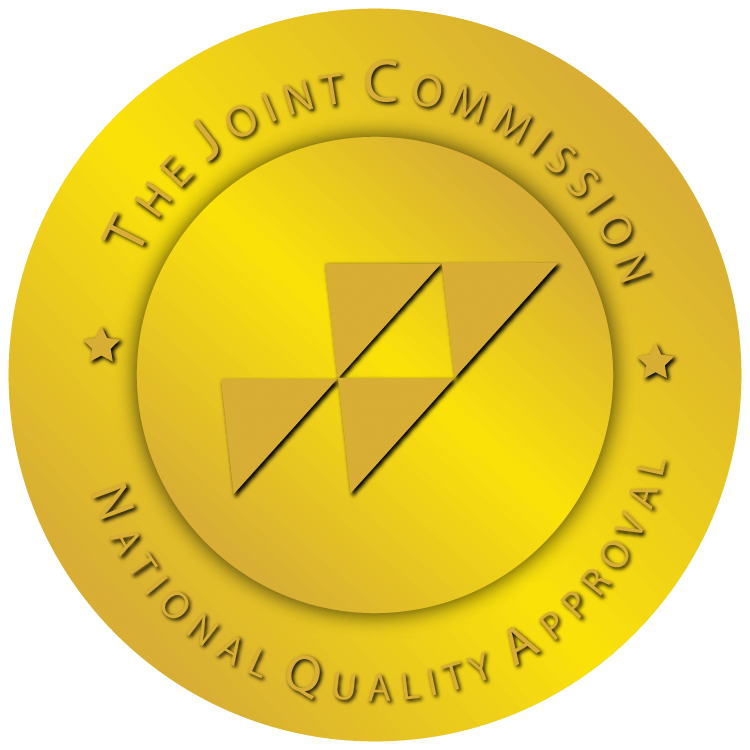
Depression can come in various forms, but one of the most prevalent examples is cyclical depression. Depending on various factors, ranging from dual diagnoses to seasonal changes, the symptoms of cyclical depression can manifest in different aspects of your life. Unfortunately, cyclical depression can work to change your daily routines and affect your relationships. Treatment for cyclical depression-related disorders can help mitigate symptoms and help you get back to your life.
What Is Cyclical Depression?
Cyclical depression, often referred to as “recurrent depression,” is a class of depressive disorders hallmarked by recurring bouts of depression throughout a person’s life. These bouts can last for a period of time before temporarily subsiding, plateauing, and then returning. Because of the nature of these disorders and their similarity to other disorders, diagnoses for cyclical depression can be difficult to make. As a result, cyclical depression can often be misdiagnosed or attributed to other natural mood fluctuations, most commonly premenstrual syndrome (PMS) or bipolar disorder.
Oftentimes, cyclical depression can accompany other disorders as a side effect of the original diagnosed condition. For example, those with obsessive compulsive disorder (OCD) can see the effects of cyclical depression due to the increased feeling of anxiety and frequent panic attacks linked to their OCD. These symptoms can cause recurrent depressive episodes due to their interference with daily routines. Similarly, for those with post-traumatic stress disorder (PTSD), fluctuating depressive episodes can be a major side effect of a PTSD diagnosis. Eventually, these episodes can develop into cyclical depression.[1]Merrill, A., Gershuny, B., Baer, L., & Jenike, M. A. (2011). Depression in comorbid obsessive‐compulsive disorder and posttraumatic stress disorder. Journal of clinical psychology, 67(6), … Continue reading
Symptoms of Depression
One of the best plans for treating cyclical depression is knowing and identifying the symptoms that can lead to cyclical depression. Similar to clinical depression, cyclical depression disorders cause episodes of low emotional periods coupled with a lack of interest in activities you once enjoyed.[2]Mayo Clinic. (2018). Depression (major depressive disorder) – Symptoms and causes. Retrieved March 21, 2022, from … Continue reading Where the two diagnoses differ is in their frequency of depressive episodes. While clinical depression is a persistent feeling, cyclical depression is categorized by recurrent episodes that come and go.
Common symptoms shared by clinical depression and cyclical depressive disorders include:
- Sadness
- Irritability or anger
- Sleeping issues
- Low libido
- Anxiousness
- Excessive sleeping
- Noticeable changes in diet
- Weight fluctuations
- Self-deprecation
- Suicidal thoughts or ideations

Cyclical Mood Disorders: An Overview
With any disorder relating to drastic mood swings and frequent low points, many individuals incorrectly diagnose themselves with bipolar disorder. However, multiple diagnoses could be the cause of certain mood changes.[3]Bernaras, E., Jaureguizar, J., & Garaigordobil, M. (2019). Child and adolescent depression: a review of theories, evaluation instruments, prevention programs, and treatments. Frontiers in … Continue reading Due to the similarity of symptoms in each of the disorders listed below, they fall under the umbrella of depressive mood disorders. In fact, all may be described as cyclical depressive disorders.
What Is Cyclothymia?
Cyclothymia is a cyclical depressive disorder characterized by symptoms that present themselves similar to bipolar disorder. Those diagnosed with cyclothymia typically experience smaller fluctuations in mood that mimic the mood swings associated with bipolar disorder. However, the periods of time between heightened mood episodes and depressive episodes are not as drastic as the manic episodes and major depressive episodes brought on by bipolar disorder. Also, the depressive and manic episodes exhibited by those with bipolar disorder typically occur twice a year, and can last from days to weeks.[4]NHS. (2022, March 8). Cyclothymia. Nhs.Uk. Retrieved March 21, 2022, from https://www.nhs.uk/conditions/cyclothymia/
The symptoms are frequent and can be experienced at any time, but the periods in between these episodes are relatively tame with a return to a “baseline” or stable mood. However, due to the frequency of episodes, those with cyclothymia can experience multiple mood swings within a short period of time, which can complicate their day-to-day life. Some of the most common symptoms of cyclothymia include:
- Frequent mood fluctuations occurring multiple times throughout the year
- Emotional episodes disrupt or disturb different aspects of your daily life, either making you unable to gather the will to participate or being unable to calm down during episodes of mania
- Symptoms of depression
- Heightened anxiety
Cyclothymia is commonly more manageable than bipolar disorder and can be treated with different kinds of therapy or medication. Bipolar disorder, on the other hand, is a more complex diagnosis, and requires a more serious treatment plan in order to mitigate and actively combat destructive episodes. The first step towards treating any illness, especially concerning your mental health, is to record your symptoms and talk to your doctor.
What Is Dysthymia?
Dysthymia, otherwise known as persistent depressive disorder, is similar to clinical depression. However, instead of a constant feeling of sadness, depressive episodes occur and last for a minimum of two months at a time, ranging from mild symptoms to severe. Dysthymia is a chronic condition, and can stretch on for years. Still, with proper treatment methods and regulation, living with dysthymia can be manageable.
The most prominent symptoms of dysthymia include:
- Loss of interest in normal activities
- Increased feelings of sadness
- Loss of hope
- Lethargy
- Increased self-deprecation
- Problems with decisiveness and decision making
- Increased hostility
- Antisocial behavior
- Trouble sleeping
- Big changes in diet or weight [5]Mayo Clinic. (2018). Persistent depressive disorder (dysthymia) – Symptoms and causes. Retrieved March 21, 2022, from … Continue reading
What Is Seasonal Affective Disorder?

Seasonal affective disorder (SAD) is a condition of depression related to the changing of seasons, which causes a drastic mood shift and an extended depressive episode. Typically, SAD symptoms are triggered by the shift from summer to autumn and winter, mostly due to colder weather and less sunlight. Vitamin D is a necessary substance essential to the function of the human mind, and one of the main sources for vitamin D is sunlight. In the winter months, with less sunlight available, the lack of vitamin D available can cause some individuals to experience depressive episodes, which manifests as seasonal affective disorder. Some of the main symptoms of seasonal affective disorder include:
- Feeling constantly tired or fatigued
- Oversleeping
- Diet changes
- New feelings of anger or the development of a short temper
- Little to no interest in different activities
- Increased sadness
- Heightened anxiety and paranoia [6]Mayo Clinic. (2021) Seasonal affective disorder (SAD) – Symptoms and causes. Retrieved March 21, 2022, from … Continue reading
In some cases of seasonal affective disorder, individuals can feel depressed during the warmer months of the year, symptoms of which may resolve during the winter months. However, this variation is less common than depression experienced during winter months. For those who do have mood changes in the summer months, increased anxiety, sleeping troubles, and irritability are more prevalent. Nevertheless, this variation of seasonal affective disorder is just as valid as those affected by lower sunlight levels during the winter months.
Fortunately, there are ways to limit your risk of developing seasonal affective disorder and mitigating your symptoms, including maintaining your vitamin D levels with vitamin D supplements.[7]Penckofer, S., Kouba, J., Byrn, M., & Estwing Ferrans, C. (2010). Vitamin D and depression: where is all the sunshine?. Issues in mental health nursing, 31(6), 385-393. However, although semi-promising results have been found from increasing one’s vitamin D levels year round, taking vitamin D supplements is not guaranteed to cure your seasonal affective disorder. Besides supplements, traditional methods of mental illness treatment can help with seasonal affective disorder, including the use of therapy. If you feel as though you have seasonal affective disorder, discuss a treatment plan with your doctor.
How to Live With Depression and Other Similar Mood Disorders
Living with a mental illness is hard work, but it is certainly an achievable goal. Coping mechanisms like journaling, exercise, painting, or traditional talk therapy are all easy options that can help you manage your symptoms during a depressive episode. One of the first steps towards reaching a point of stability in terms of your diagnosis is speaking with your doctor about treatment plans. Once you can establish an effective, manageable plan to combat your depression, you can begin working towards integrating your plan into your daily routine.
Some forms of cyclical depression—most notably seasonal affective disorder—are easier to predict, since those with seasonal affective disorder have a general idea as to when their symptoms will increase. Depending on which seasons contribute to an individual with seasonal affective disorder’s depression, the change between summer to fall, or winter to spring, can be an indication that their symptoms are due to flare up. Similarly, people suffering from cyclothymia have reported mood shifts that can indicate the beginning of a manic episode or depressive episode, helping them plan accordingly for the duration of their mood shifts.
Complicating Factors of Depressive Disorders
Unfortunately, as with most mental health conditions, there is a vast array of complications that can change the trajectory of your path towards treating your depression.[8]Ratner, K., Mendle, J., Burrow, A. L., & Thoemmes, F. (2019). Depression and Derailment: A Cyclical Model of Mental Illness and Perceived Identity Change. Clinical Psychological Science, 7(4), … Continue reading Your personal medical history, along with any reactions or issues you have with pharmaceutical or illicit substances, can derail your treatment plan and possibly cause complications.[9]Kanter, J. W., Busch, A. M., Weeks, C. E., & Landes, S. J. (2008). The nature of clinical depression: Symptoms, syndromes, and behavior analysis. The Behavior Analyst, 31(1), 1-21. Out of the various complications that could arise, the most prominent occur due to dual diagnoses and substance abuse.
Depression and Substance Abuse: Dual Diagnoses?

Mental health conditions are often accompanied by co-occurring conditions. Every mental health condition is different, thus different treatment methods are used for different disorders. Unfortunately, the most common treatment methods for various conditions may conflict and cause issues for treatment. For example, prescriptions administered for dual diagnoses could interact and cause adverse side effects, and other medications may be necessary to avoid harmful interactions.
Other times, dual diagnoses can lead to complications when it comes to managing the emotions caused by both. As mentioned previously, some cyclical depressive disorders can be diagnosed alongside other disorders, such as post-traumatic stress disorder or OCD. This can complicate the treatments and strategies aimed to address one or both.
For example, depression can make processing the guilt, flashbacks, and anxiety issues related to PTSD more difficult. In the same vein, PTSD symptoms can make it less likely for those with previously-occurring depression to seek treatment, and can make some treatments less effective. For this reason, it is important to consider all your diagnoses, their symptoms, and the potential effects of their treatment when addressing your mental health.
Depression and Substance Abuse
Drug use has often been linked to the worsening of mental health issues, and depressive disorders are no different. Certain drugs, often hallucinogens, can contribute to psychosis or an increase in paranoia for people with paranoia-based disorders, such as schizophrenia. For people with anxiety disorders, stimulants such as cocaine or methamphetamines can cause an increase in anxious behavior due to the effects of the drug. Cyclical depressive disorder, on the other hand, can be affected by many substances, but the most common that can yield poor results tend to be alcohol, heroin, and fentanyl.
In addition, substance abuse issues can be a trigger for depressive episodes. Then, use of drugs or alcohol can worsen the symptoms, causing a cycle that is even more difficult to break. Depending on the substance, withdrawal and detox can make treating your depression complicated, and sometimes impossible—especially on your own.[10]Volkow, N. D. (2004). The reality of comorbidity: depression and drug abuse. Biological Psychiatry, 56(10), 714-717. If you’re using certain substances, including alcohol, you can make your depression even worse. If you’re facing a major low point in your depressive episode, this combination can be deadly.
Getting help for addiction is extremely important, especially if it is worsening a serious issue like cyclical depression and depression-related symptoms. If you’re already in a fragile mental state due to your depressive disorder, addiction can only exacerbate your symptoms and pose a greater threat to your health. If you need help, seeking inpatient or intensive outpatient services can help you tackle your addiction with respect to your co-occurring depression.
Dual Diagnosis: Discover Your Treatment Options
Cyclical depression, because of its tendency to come and go over time, can be a challenge to treat. However, with proper attention and consideration to co-occurring conditions, these depressive episodes can be addressed, giving you a better handle on your mental health. Thankfully, treatment is available for many forms of depression and can help you get back to your normal routine and live your daily life. Between counseling, pharmaceutical medication, and addiction treatment, there is hope for treating your depression.
*Editor’s Note: This article was originally published Oct 1, 2018 and has been updated May 16, 2022.
Reviewed by Christopher Schwartfigure MS, LGPC, CAC-AD
References
| ↑1 | Merrill, A., Gershuny, B., Baer, L., & Jenike, M. A. (2011). Depression in comorbid obsessive‐compulsive disorder and posttraumatic stress disorder. Journal of clinical psychology, 67(6), 624-628. |
|---|---|
| ↑2 | Mayo Clinic. (2018). Depression (major depressive disorder) – Symptoms and causes. Retrieved March 21, 2022, from https://www.mayoclinic.org/diseases-conditions/depression/symptoms-causes/syc-20356007 |
| ↑3 | Bernaras, E., Jaureguizar, J., & Garaigordobil, M. (2019). Child and adolescent depression: a review of theories, evaluation instruments, prevention programs, and treatments. Frontiers in psychology, 10, 543. |
| ↑4 | NHS. (2022, March 8). Cyclothymia. Nhs.Uk. Retrieved March 21, 2022, from https://www.nhs.uk/conditions/cyclothymia/ |
| ↑5 | Mayo Clinic. (2018). Persistent depressive disorder (dysthymia) – Symptoms and causes. Retrieved March 21, 2022, from https://www.mayoclinic.org/diseases-conditions/persistent-depressive-disorder/symptoms-causes/syc-20350929 |
| ↑6 | Mayo Clinic. (2021) Seasonal affective disorder (SAD) – Symptoms and causes. Retrieved March 21, 2022, from https://www.mayoclinic.org/diseases-conditions/seasonal-affective-disorder/symptoms-causes/syc-20364651 |
| ↑7 | Penckofer, S., Kouba, J., Byrn, M., & Estwing Ferrans, C. (2010). Vitamin D and depression: where is all the sunshine?. Issues in mental health nursing, 31(6), 385-393. |
| ↑8 | Ratner, K., Mendle, J., Burrow, A. L., & Thoemmes, F. (2019). Depression and Derailment: A Cyclical Model of Mental Illness and Perceived Identity Change. Clinical Psychological Science, 7(4), 735–753. |
| ↑9 | Kanter, J. W., Busch, A. M., Weeks, C. E., & Landes, S. J. (2008). The nature of clinical depression: Symptoms, syndromes, and behavior analysis. The Behavior Analyst, 31(1), 1-21. |
| ↑10 | Volkow, N. D. (2004). The reality of comorbidity: depression and drug abuse. Biological Psychiatry, 56(10), 714-717. |








